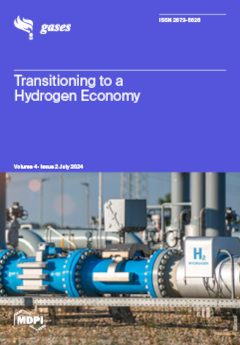Despite the growth of renewable energy, fossil fuels dominate the global energy matrix. Due to expanding proved reserves and energy demand, an increase in natural gas power generation is predicted for future decades. Oil reserves from the Brazilian offshore Pre-Salt basin have a
[...] Read more.
Despite the growth of renewable energy, fossil fuels dominate the global energy matrix. Due to expanding proved reserves and energy demand, an increase in natural gas power generation is predicted for future decades. Oil reserves from the Brazilian offshore Pre-Salt basin have a high gas-to-oil ratio of CO
2-rich associated gas. To deliver this gas to market, high-depth long-distance subsea pipelines are required, making Gas-to-Pipe costly. Since it is easier to transport electricity through long subsea distances, Gas-to-Wire instead of Gas-to-Pipe is a more convenient alternative. Aiming at making offshore Gas-to-Wire thermodynamically efficient without impacting CO
2 emissions, this work explores a new concept of an environmentally friendly and thermodynamically efficient Gas-to-Wire process firing CO
2-rich natural gas (CO
2 > 40%mol) from high-depth offshore oil and gas fields. The proposed process prescribes a natural gas combined cycle, exhaust gas recycling (lowering flue gas flowrate and increasing flue gas CO
2 content), CO
2 post-combustion capture with aqueous monoethanolamine, and CO
2 dehydration with triethylene glycol for enhanced oil recovery. The two main separation processes (post-combustion carbon capture and CO
2 dehydration) have peculiarities that were addressed at the light shed by thermodynamic analysis. The overall process provides 534.4 MW of low-emission net power. Second law analysis shows that the thermodynamic efficiency of Gas-to-Wire with carbon capture attains 33.35%. Lost-Work analysis reveals that the natural gas combined cycle sub-system is the main power destruction sink (80.7% Lost-Work), followed by the post-combustion capture sub-system (14% Lost-Work). These units are identified as the ones that deserve to be upgraded to rapidly raise the thermodynamic efficiency of the low-emission Gas-to-Wire process.
Full article




